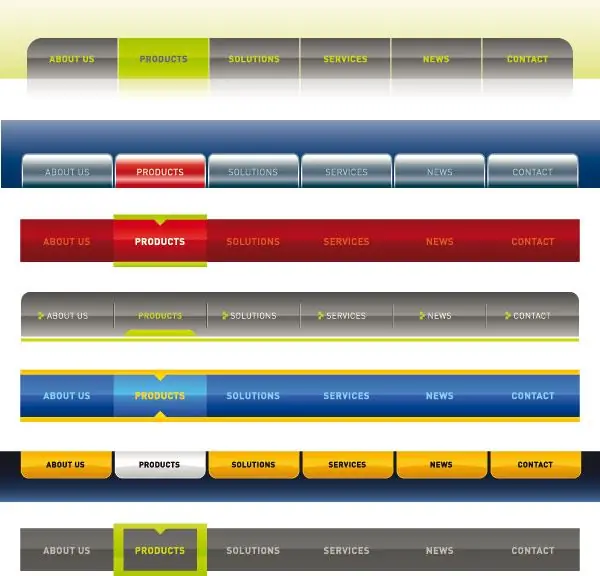- Author Lauren Nevill [email protected].
- Public 2023-12-16 18:48.
- Last modified 2025-01-23 15:15.
Such a menu is an important navigation element of any website created using flash technology. It helps to simplify the design, makes it more attractive, and also makes it easier to navigate the site. In most cases, flash menus are of the same type, which can be either animated or ordinary three-frame buttons. Let's consider the algorithm for installing a flash menu using the example of working with a horizontal menu in Adobe Flash CS4.

It is necessary
Adobe Flash CS4
Instructions
Step 1
Create a new document, choosing the required scene sizes. In our case, we will focus on the standard sizes 550 × 400.
Step 2
Draw a shape for the menu, select it and move it to the MovieClip, where all further work will take place.
Step 3
Set the size of the shape depending on the number of buttons. If each button on your menu has a different text and shape, go for it. If the buttons are to be of the same type, it is most convenient to modify the initial shape, and only then break it down into its component parts. After the shape is ready, break it down into the number of parts that corresponds to the number of buttons. Then each part needs to be selected and converted to MovieClip.
Step 4
Give each button an instance name: for example, but1, but2, etc. Place each of the buttons on its own layer.
Step 5
This is where the most routine work begins: you have to animate each button. Remember that if the menu buttons are identical, the animation of each button must be the same.
Step 6
So, the animation for the buttons is ready. Next, we write the code that will work with the buttons. Create an empty layer in the MovieClip, add the resulting code to the menu and to the 1st frame.
Step 7
After the work on creating the menu is completed, test the resulting menu. If you did everything correctly, then it will work properly. Now its code can be inserted into the site where you need it.






